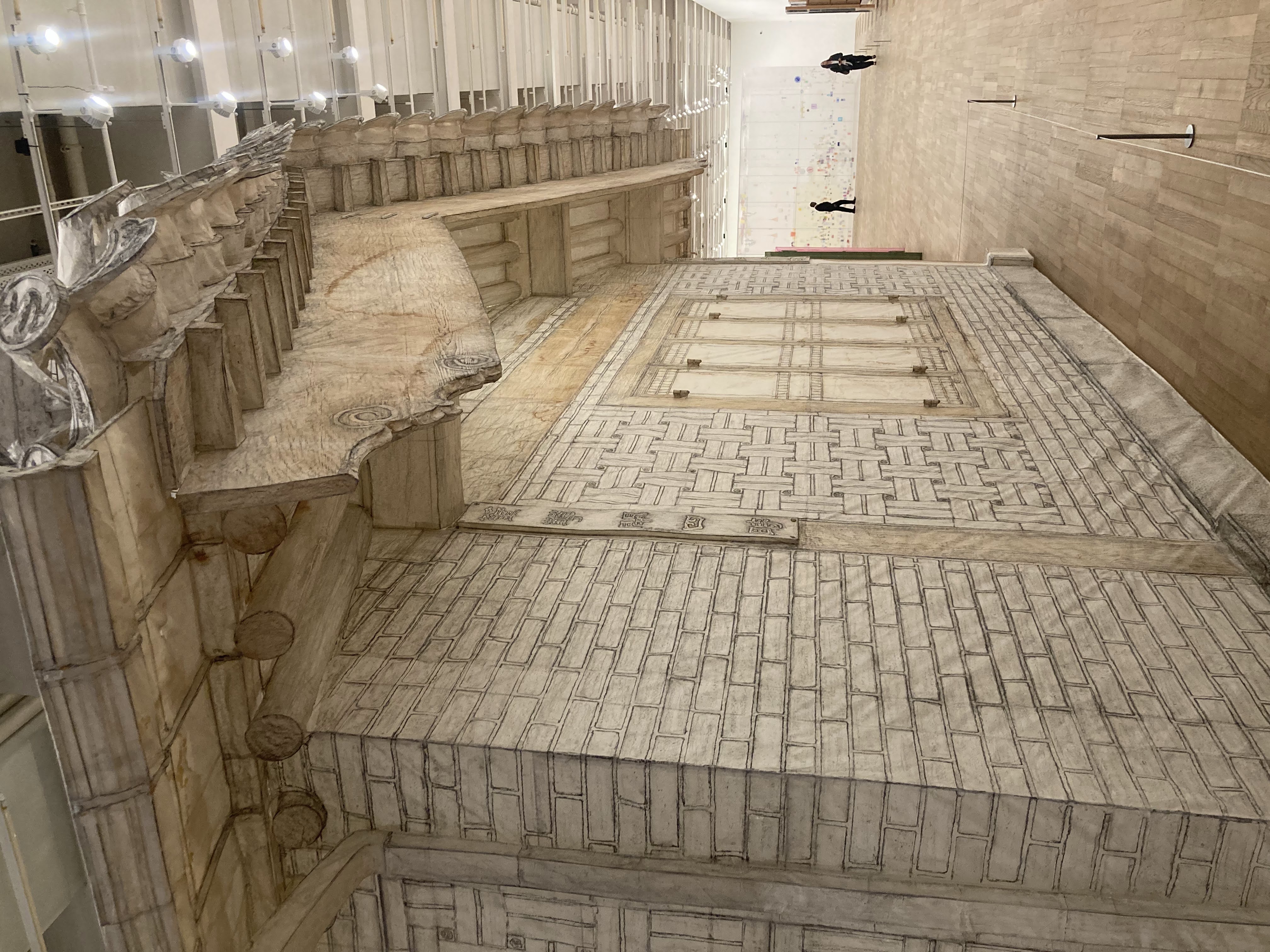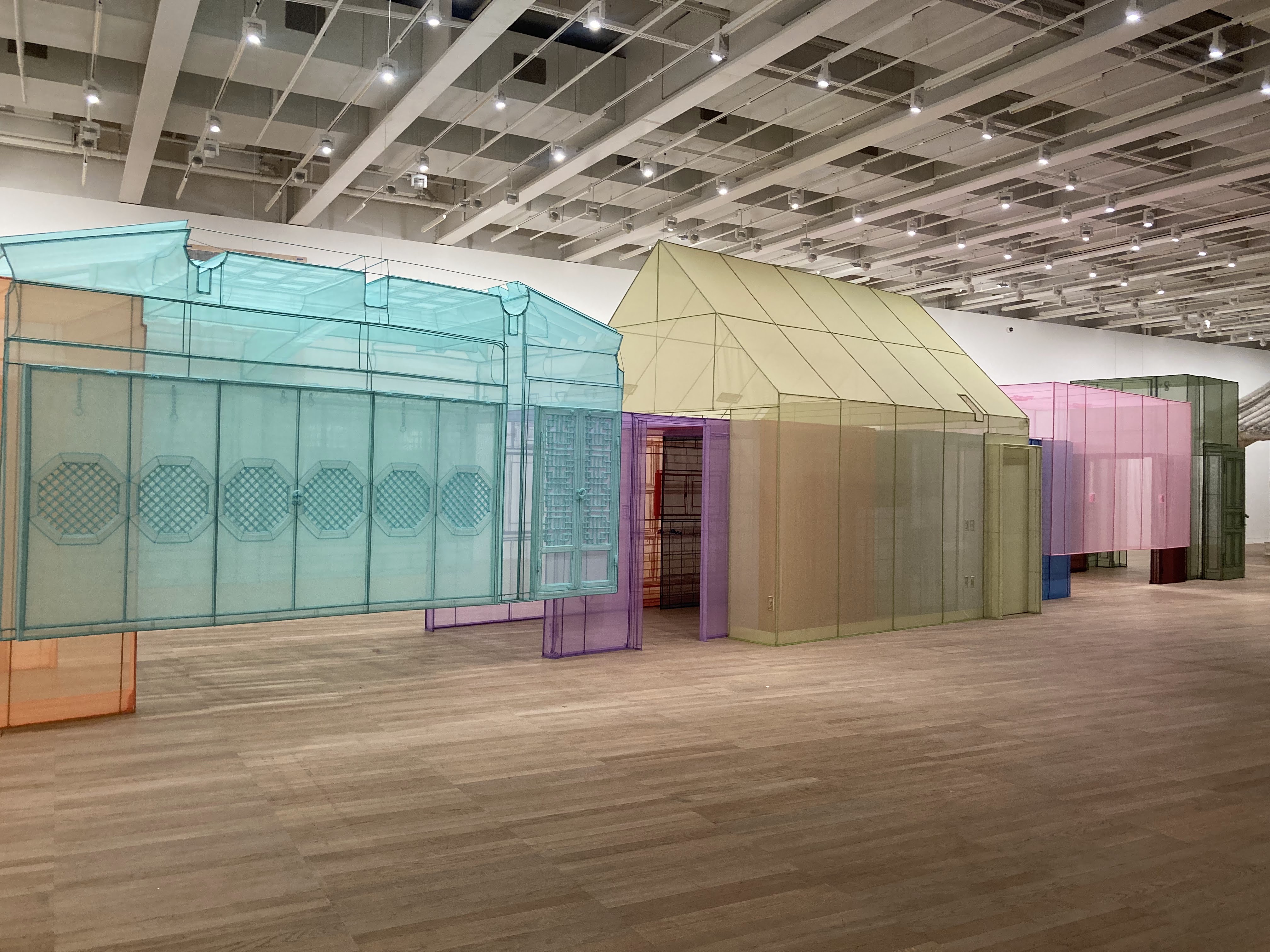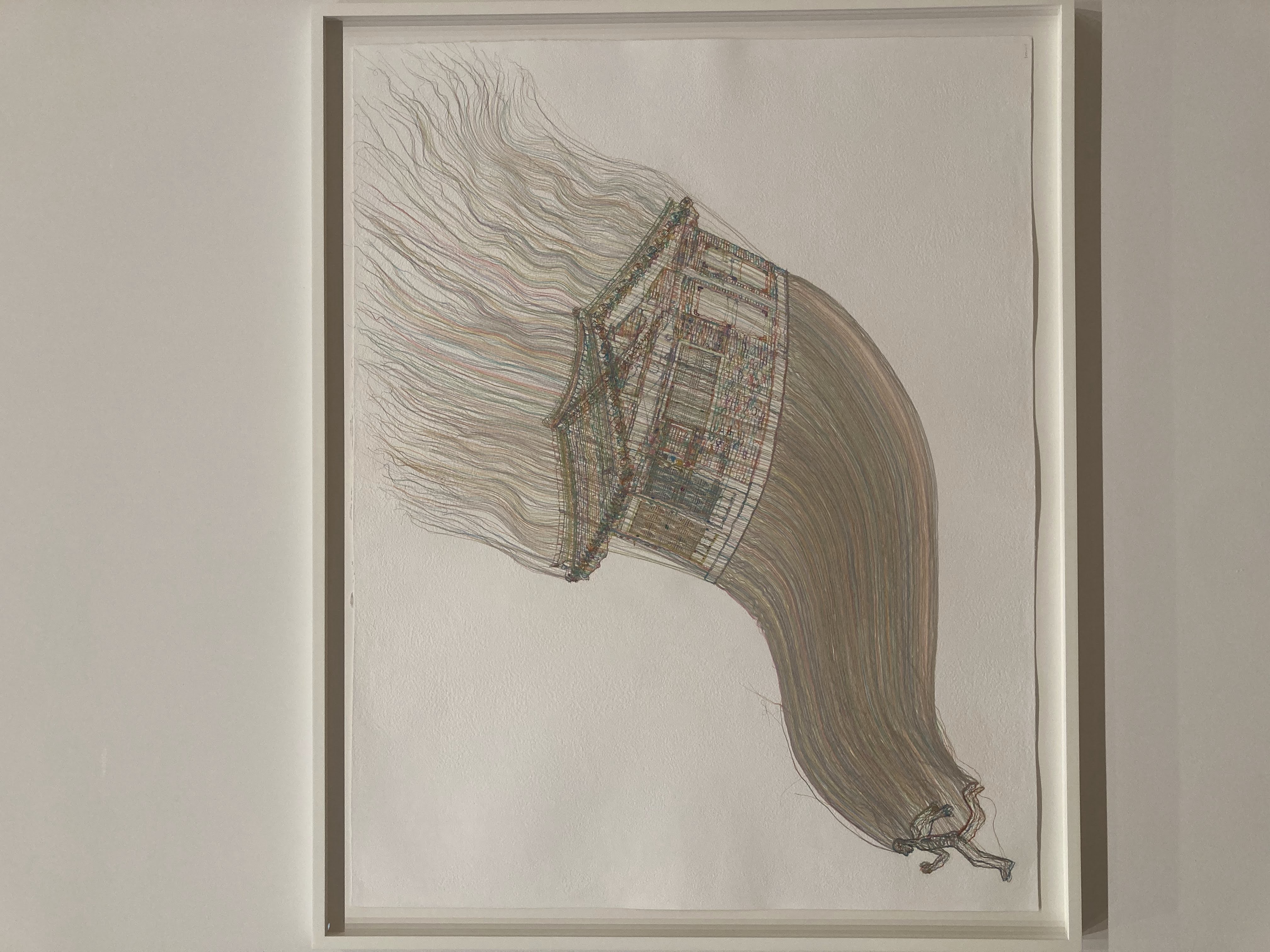The in-between spaces are where we truly exist - Do Ho Suh at Tate Modern
Born in Seoul in 1962, Do Ho Suh grew up surrounded by art, with his father also a renowned ink painter. He earned his bachelor’s and master’s degree in Oriental Painting from Seoul National University in Korean painting and slowly started to expand his practice to incorporate more and more sculptural pieces and installations. At his eponymous exhibition at Tate Modern, Rubbing/Loving: Seoul Home (2013- 22) is one of the first pieces that greets the audience and is a large- scale reproduction of his home in Korea. A project that took over a decade, Suh wrapped the exterior of his home in mulberry paper and then used graphite to rub and trace every crevice and texture of his wooden home. This time consuming and strenuous process of preserving his childhood home was an ode to a perpetual ache that the house “always followed” the artist, even decades after leaving South Korea. Carefully rubbing each feature of his house, Suh interrogates the idea of home being not a rigid site in a memory, but a moveable being that we can carry with us wherever we go.

Do Ho Suh, Rubbing/Loving: Seoul Home (2013-2022). Photo: © Rhea Mathur, Tate Modern exhibition 2025.
What draws his audience?
“Home started to exist for me when I no longer had it”, the artist says in a 2024 interview with the Guardian. His work, for that reason, is an act of preserving cherished memories and finding a physical form to store them in, in time and place. It echoes the idea that “In-betweenness is a fundamental condition of our times”, written by postcolonial scholar Homi K. Bhabha in his seminal work, The Location of Culture (1994). Many artists including Zarina Hashmi, an Indian artist and printmaker, examine this desire to recreate a lost memory. In Home is a Foreign Place (1999), Hashmi similarly investigates the importance of a space and its psychological impact on our understanding of our identities. Suh similarly acknowledges a fundamental question for many, making his work extremely relatable to a diverse audience.
For this reason, it is no surprise that his Tate Modern exhibition in a culturally diverse city like London has been extended by a week, now closing on the 26th instead of the 19th of October. Over the years, his work - from paintings to large-scale installations, have also been acquired by many major museums across the world for their permanent collections. This includes the Museum of Modern Art and the Whitney Museum of American Art in New York, the Tate in London, the 21st Century Museum of Contemporary Art in Kanazawa, Japan. His work makes a statement, makes you linger longer in an exhibition, it calls attention to detail and these are all metrics that his market value cannot measure.
 Do Ho Suh, Nest/s (2024). Photo: © Rhea Mathur, Tate Modern exhibition 2025.
Do Ho Suh, Nest/s (2024). Photo: © Rhea Mathur, Tate Modern exhibition 2025.
What do the numbers say?
While the artist boasts a high sell-through rate, his public auction record has been frozen at $682k. His year over year growth has been in the negative in 2021, 2022, 2024, selling 4 or fewer works each year. In 2023, his total sales volume grew to $239,79, which is almost $200,000 more than both 2022 ($27,986) and 2024 ($43,227). His most valuable creation years are 2015 and 2005, in both years - he lived in a different country. Suh moved to the US in 1991 to study at Rhode Island School of Design, followed by Yale. Then, in 2010, he relocated to London. His movement across the globe also translated in him being represented by global galleries including Victoria Miro (Venice and London), Lehmann Maupin (New York, Seoul, London) and STPI – Creative Workshop & Gallery (Singapore).
A key point for all of Suh's numbers is that a lot of his work cannot simply be hung on a wall and takes up a lot of space. This makes it easier to add to a museum as an installation rather than allowing collectors the opportunity to easily put his work on their walls. Using Artscapy, you can easily keep track of the performance of artists - their latest sales and market performance so you can actively seek sought for investment opportunities and grow your collection. Making an informed decision when it comes to investing is an important step to becoming a seasoned collector.
A closer look at the exhibition
Suh’s work has to be seen in real life to understand its emotional magnitude. His large sculptures, in person, illustrate not grandeur but simplicity and comfort mimicking these aspects of our everyday lives. “I see life as a passageway, with no fixed beginning or destination. We tend to focus on the destination all the time and forget about the in-between spaces. But without these mundane spaces that nobody really pays attention to, these grey areas, one cannot get from point a to point b” Suh says. He uses materials such as charcoal, ink, colour pencils, polyester fabric and thread on paper. Even his larger works utilise such materials, often found in the everyday, creating a sense of familiarity and honing in on the importance of space - more psychological than physical.

Do Ho Suh, Nest/s (2024). Photo: © Rhea Mathur, Tate Modern exhibition 2025.
In an exhibition, the audience can walk through his long fabric and steel corridors in Nest/s (2024), looking at the detail on every surface from doors to shower heads to taps, all made to look almost real. This interactive experience creates the environment of something more than another art exhibition, making the audience want to take pictures and actively engage with the meaning behind his work.

Do Ho Suh, Haunting Home (2019). Photo: © Rhea Mathur, Tate Modern exhibition 2025.
One of my personal favourites however, is his 2019 work, Haunting Home. He uses thread on paper in this work and creates a figure running, carrying his home with him. His home follows him wherever he goes, with multi-coloured threads emerging from the man’s body representing every fiber of his being, symbolically transforming into his home that he drags along with him on his journey. Suh imagines his house like a parachute - giving him wings when needed as well as helping him slow down when he needs it. He attempts to, like a snail, carry his home on his back, a feeling a lot of museum goers can relate to, making Do Ho Suh’s work a beautifully introspective experience that leaves a lasting impression on his audience.








